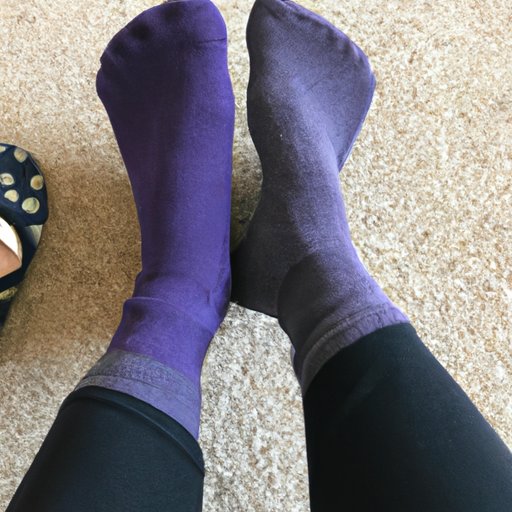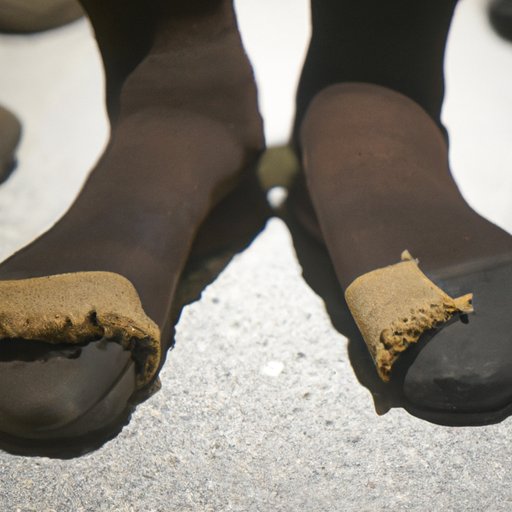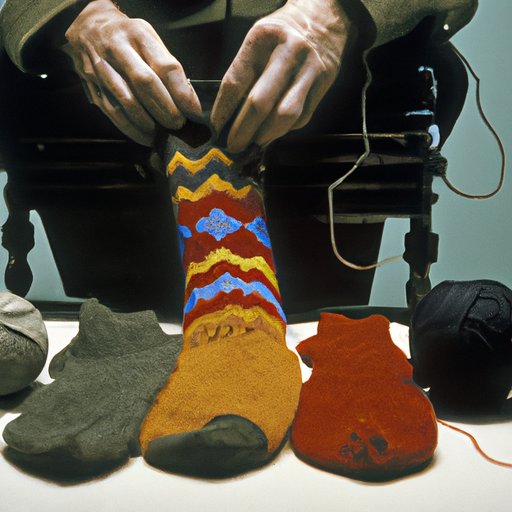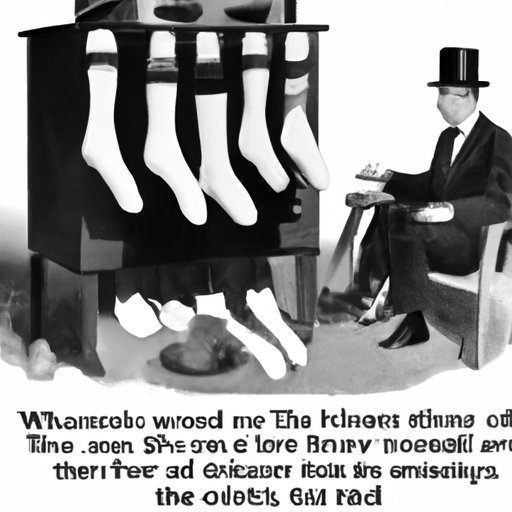Introduction
Socks are a common item of clothing, but it’s easy to forget that they weren’t always around. When were socks invented? This is a question that has puzzled many throughout the years, and one that this article seeks to answer.
The term “socks” can refer to any type of garment that covers the foot and extends up to the ankle or calf. They are usually made of knitted or woven fabric, such as cotton, wool, nylon, or polyester. They come in a variety of shapes, sizes, and colors, and can be worn for both fashion and function.
In this article, we will explore the history of socks and the development of the materials used to make them. We will also investigate the possible origin stories of when socks were first invented, as well as looking at the different types of socks that have been worn over the centuries.
A Historical Look at the Invention of Socks
People have been wearing foot coverings for thousands of years, with the earliest known examples dating back to ancient Egypt. The ancient Egyptians wore sandals made of leather and papyrus, as well as using linen wrappings to protect their feet from the hot desert sand. These foot wraps provided protection and warmth, and were also used to signify social status.
As time went on, different materials were developed and used to make socks. Wool was used by the Ancient Greeks and Romans, while silk was popular among the Chinese and Japanese. Knitted socks became popular in the 16th century, and the use of machines to make socks began in the 19th century.

The Journey from Foot Wraps to Modern Day Socks
The invention of the knitting machine in 1589 revolutionized the sock-making industry. This machine allowed for the mass production of socks, making them more affordable and accessible to the public. As technology advanced, so did the design and quality of socks.
Over the years, socks have gone through many changes in terms of style, shape, and color. Stripes, polka dots, and other patterns became popular in the 19th century, while brighter colors were introduced in the 20th century. Today, there is a huge variety of socks available, from plain white athletic socks to colorful patterned dress socks.
Investigating the Origins of the Sock
Although the exact date of when socks were invented is unknown, there are several references to socks in literature and art throughout history. The Greek poet Hesiod wrote about socks in his 8th century BC poem, Works and Days, while the Roman philosopher Seneca mentioned them in his writings.
There are also several possible origin stories of when socks were invented. One theory suggests that socks were created by an Englishman named William Lee in 1589. Another theory claims that socks were invented in the Middle East during the 11th century.

Ancient Footwear: A Closer Look At Socks Through the Ages
Throughout history, socks have been popular in many cultures. The Ancient Greeks and Romans wore woolen socks to keep their feet warm, while the Chinese and Japanese favored silk. In Medieval Europe, fur-lined stockings were fashionable among the wealthy, while peasants often wore thick woolen socks.
Different types of socks were also worn in different cultures. The Ancient Greeks and Romans wore tabi, which were split-toe socks made of wool or leather. The Japanese wore tabi with straw soles, while the Chinese wore long cloth socks called kouzhao.
The Evolution of Socks: Exploring the Timeline
The timeline of sock design is a fascinating one. In the 17th century, striped and polka dot designs became popular, while the 18th century saw the introduction of bright colors and lace trim. In the 19th century, the advent of new fabrics such as nylon and rayon allowed for more comfortable and durable socks.
The 20th century brought further changes in sock design. Ankle socks became popular in the 1930s, while knee-highs and crew socks were popular in the 1950s. In the 1960s, brightly colored and patterned socks were fashionable, while the 1970s saw the introduction of tube socks.

From Toe Coverings to Toe Warmers: Tracing the History of Socks
The materials used to make socks have changed over the years. Wool was the most popular material until the 19th century, when cotton and synthetic fibers such as nylon and rayon were introduced. In the 20th century, new fabrics such as spandex and lycra were used to create stretchy and comfortable socks.
Technology has also had a major impact on the production of socks. New machines such as knitting machines and computerized looms have made it easier and faster to produce socks. This has allowed for the mass production of socks, as well as the creation of new and innovative designs.

Uncovering the Mystery of When Socks Were Invented
The exact date of when socks were invented is still unknown, but there is evidence pointing to a possible invention date. In the 16th century, William Lee invented the knitting machine, which revolutionized the sock-making industry. It is likely that socks were invented shortly after this invention, although the exact date remains a mystery.
As for who invented the first pair of socks, this is also unknown. Some believe it was William Lee, while others think it may have been someone else. Whoever invented the first pair of socks, it is clear that they have had a lasting impact on fashion and culture.
Conclusion
Socks have come a long way since their invention. From ancient foot wraps to modern day styles, socks have been an integral part of fashion and culture for centuries. This article explored the history of socks and the possible origin stories of when they were invented. Although the exact date of when socks were invented remains a mystery, it is clear that they have had a lasting impact on society.
(Note: Is this article not meeting your expectations? Do you have knowledge or insights to share? Unlock new opportunities and expand your reach by joining our authors team. Click Registration to join us and share your expertise with our readers.)
